| Srl | Item |
| 1 |
ID:
127873
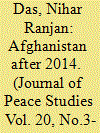

|
|
|
| 2 |
ID:
109542
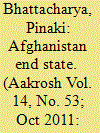

|
|
|
| 3 |
ID:
108370
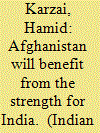

|
|
|
| 4 |
ID:
092211
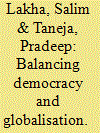

|
|
|
|
|
| Publication |
2009.
|
| Summary/Abstract |
Contemporary globalisation is viewed both as offering immense opportunities and posing a fundamental threat to the nation-state and democratic governance. To the proponents of globalisation, integration into the world economy through liberalisation of foreign trade and capital flows, combined with deregulation of the national economy, promises greater economic efficiency, higher consumption levels and generally improved living standards. For them, state intervention in the economy aimed at restricting the free play of market forces is dysfunctional, resulting in lower social and economic benefits for the population at large. Within this optimistic perspective, globalisation is thought likely to 'flatten' economic differences between nations1 and lead to a 'borderless world',2 where the barriers to flows of capital, technology, and information will be minimised if not totally removed.
|
|
|
|
|
|
|
|
|
|
|
|
|
|
|
|
| 5 |
ID:
110326
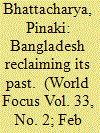

|
|
|
| 6 |
ID:
110330
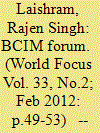

|
|
|
| 7 |
ID:
129218
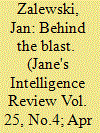

|
|
|
| 8 |
ID:
127134
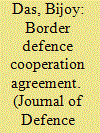

|
|
|
|
|
| Publication |
2014.
|
| Summary/Abstract |
The long expected Agreement on Border Defence Cooperation (BDCA) was signed between the governments of India and China on 23 October 2013 in Beijing, during the visit of the Indian Prime Minister Dr Manmohan Singh to the People's Republic of China. The draft of the agreement had been through close-door negotiations by both the governments for about a year prior to its signing. Incidentally, it was also during these negotiations that a three week long face-to-face incident occurred-in April-May 2013-at Depsang located in the Aksai Chin region which is disputed between India and China.
|
|
|
|
|
|
|
|
|
|
|
|
|
|
|
|
| 9 |
ID:
125237
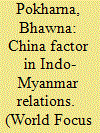

|
|
|
|
|
| Publication |
2013.
|
| Summary/Abstract |
Myanmar has two great and powerful neighbours, India to the Northwest and China to the Northeast. It has Bangladesh to the West, Laos to the East and Thailand to South East. Myanmar's long coastline with good harbors enables it to dominate the Bay of Bengal. Myanmar Shares 2171 kilometres Long border with China whereas with India it shares 1643 kilometres of border. Myanmar lies where South, South East and Asia meet - there the dominant cultures of these sub-regions compete for influence.
|
|
|
|
|
|
|
|
|
|
|
|
|
|
|
|
| 10 |
ID:
148431
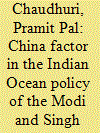

|
|
|
| 11 |
ID:
114356
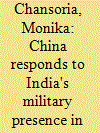

|
|
|
| 12 |
ID:
126742
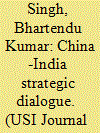

|
|
|
| 13 |
ID:
100254
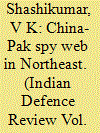

|
|
|
| 14 |
ID:
093948
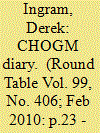

|
|
|
| 15 |
ID:
116082
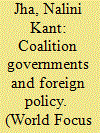

|
|
|
| 16 |
ID:
129385
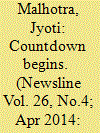

|
|
|
|
|
| Publication |
2014.
|
| Summary/Abstract |
Who will emerge victorious in India's May 2014 elections? Shehzada Rahul, the chaiwala form Gujarat, Narendra Modi, AK 49' Arvidn Kejriwala, or someone else? experts predict a land-slide victory for the BJP but history- as previously proven-may have something else in store for India.
|
|
|
|
|
|
|
|
|
|
|
|
|
|
|
|
| 17 |
ID:
100432
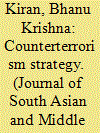

|
|
|
| 18 |
ID:
098092
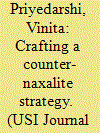

|
|
|
| 19 |
ID:
119124
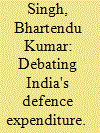

|
|
|
| 20 |
ID:
100966
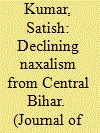

|
|
|
|
|
| Publication |
2010.
|
| Summary/Abstract |
The Naxal problem has become the biggest internal threat to the country. Especially after the comments of the Prime Minister Manmohan Singh in 2007, it has become a matter of concern as well as a subject of academic debate. The new thought, innovative ideas and fresh planning have been developed to address this issue extensively and intensively. In this backdrop, a case study of Central Bihar becomes relevant to focus the light on this issue. It is an established fact that Naxalism in Bihar had made its route through Central Bihar. When the Counterinsurgency mechanism crushed the first bubbles of Naxalism in West Bengal and Andhra Pradesh, it found its breeding ground in Central Bihar. Repeated massacres and Naxal terror in Central Bihar became the concern for the country in 1980s and 1990s. It argues that the changing socio-economic conditions along with other factors massively restricted the Maoist popularity and strength in the Central Bihar.
|
|
|
|
|
|
|
|
|
|
|
|
|
|
|
|